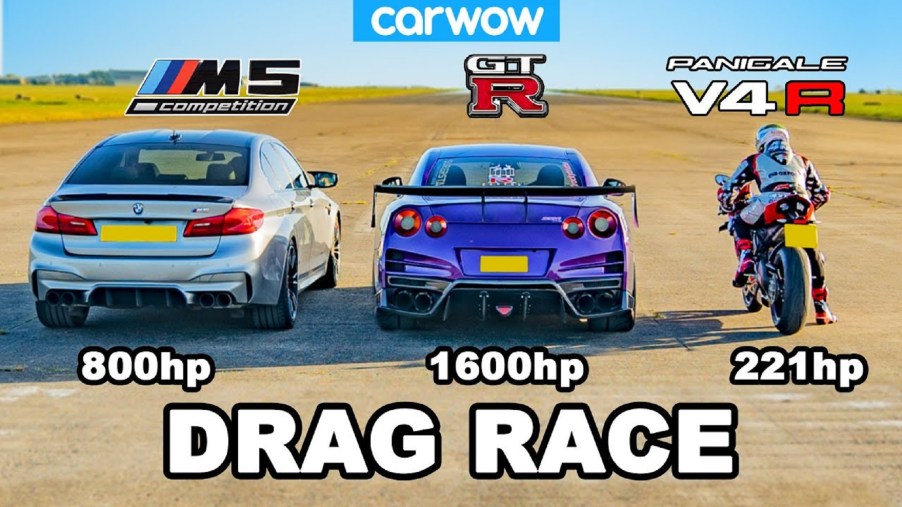
Can a Ducati Panigale V4 R Out-Speed a 1600-Hp Nissan GT-R and 800-Hp BMW M5?
While it’s no longer quite as cutting-edge as it was, the Nissan R35 GT-R is still an extremely fast car. Especially if, as many have done with its Skyline predecessors, it’s been tuned. But it’s possible to get supercar-like performance in some sedans today—for example, the BMW M5 Competition. However, for a time, motorcycles were faster than cars; and some still out-accelerate them. So, what happens when the Ducati Panigale V4 R, the ‘Ferrari of motorcycles,’ faces off against both a tuned M5 and a tuned GT-R? That’s what Carwow wanted to find out.
How does a 2020 Ducati Panigale V4 R compare to a tuned Nissan GT-R and BMW M5 Competition?
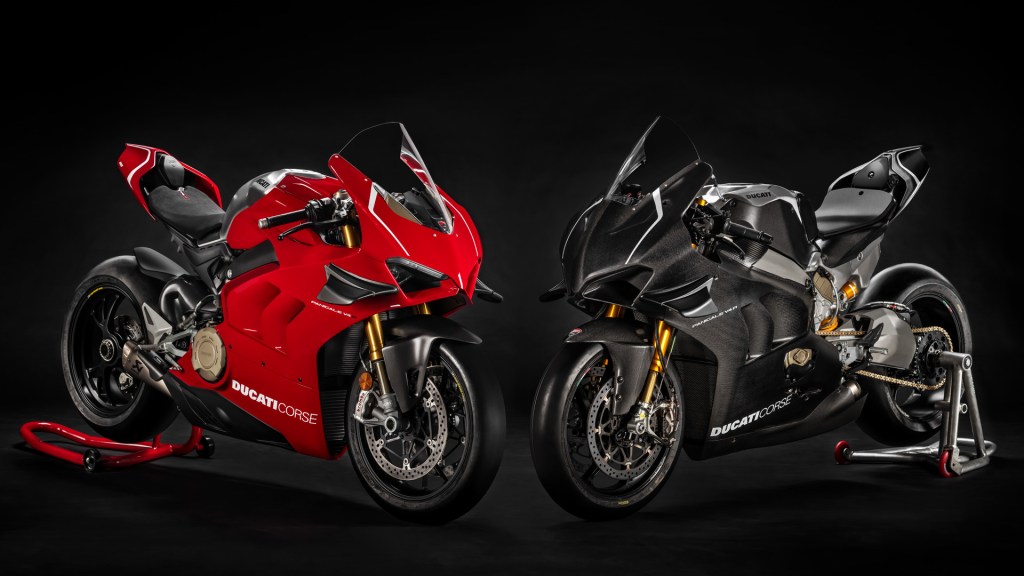
The 2020 Ducati Panigale V4 R is definitely a high-performance motorcycle. It features a 998cc V4, which is rated in the US at 209 hp and 83 lb-ft, Cycle World reports. But in Europe, it’s rated at 221 hp, due to a less-restrictive exhaust, Cycle World reports. However, Ducati offers the Panigale V4 R with a track-only Akrapovic exhaust that delivers 234 hp. Which, in a bike that weighs 425 pounds, is quite a lot.
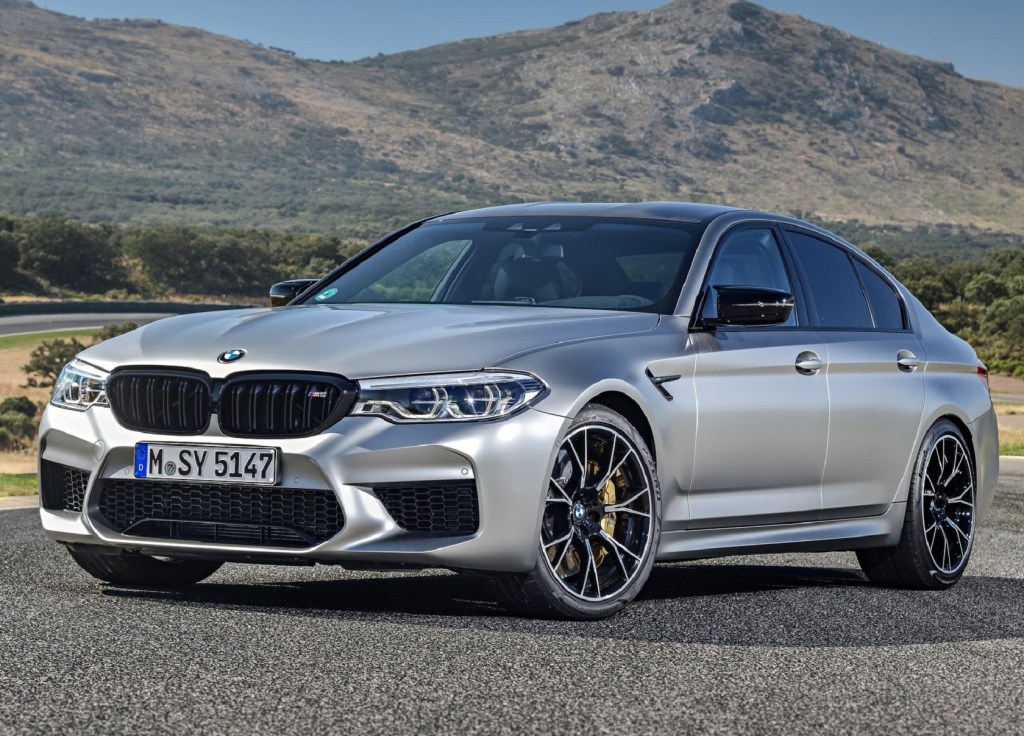
But compared to the BMW M5 Competition and Nissan GT-R Carwow brought, that might not be enough. The 2020 BMW M5 Competition’s 4.4-liter twin-turbocharged V8 makes 617 hp and 553 lb-ft in standard form, Motor Trend reports. But the M5 in the Carwow video was tuned by UK-based Evolve Automotive. Thanks to a reprogrammed ECU, a new intake, and a new exhaust, it makes 800 (metric) hp and 701 lb-ft. However, it also weighs about 4300 pounds.
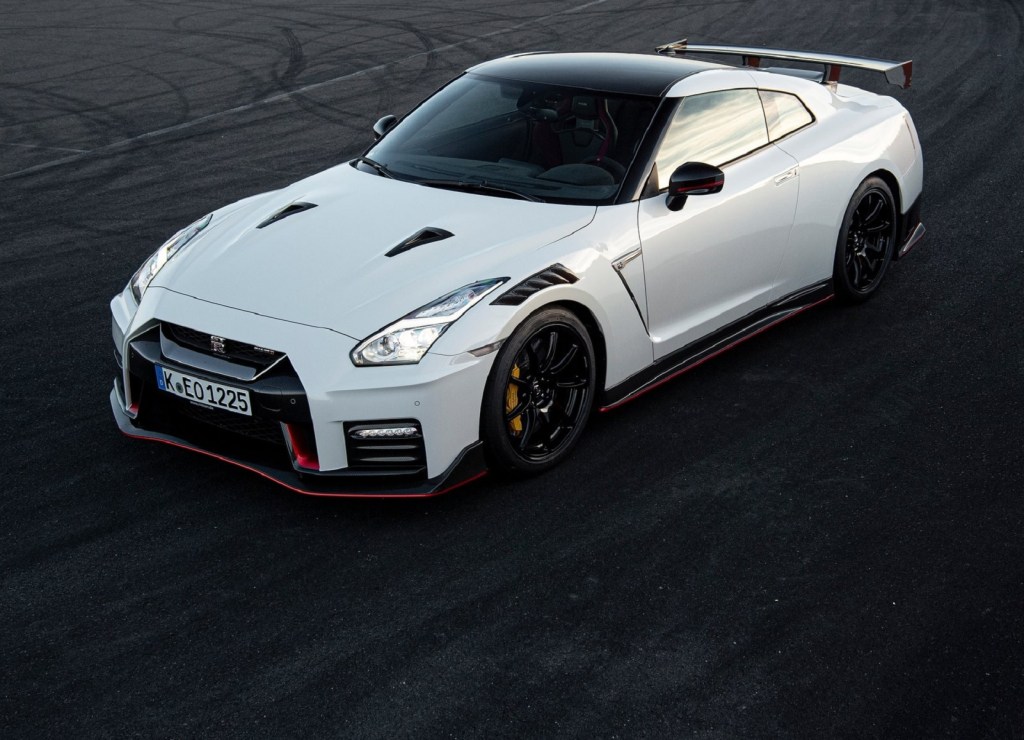
The final entrant, the tuned Nissan GT-R, is even more extreme. Normally, the R35 GT-R has a 3.8-liter twin-turbocharged V6 with 565 hp and 467 lb-ft, Car and Driver reports. The Nismo model bumps that up to 600 hp and 486 lb-ft, MT reports. But this particular GT-R has an enlarged 4.1-liter twin-turbocharged V6 tuned to 1600 (metric) hp and 1106 lb-ft. And even with the other mods its owner has added, it’s lighter than the BMW M5. It weighs in at roughly 3970 pounds.
Comparing car and motorcycle acceleration is tricky
The 2020 Ducati Panigale V4 R, then, is down on power. But it’s also the lightest of the 3 vehicles. And for acceleration, it’s not just power that matters, but also power-to-weight ratio and aerodynamics, Motor Authority explains.
Here, the Ducati Panigale V4 R has an advantage. Its power-to-weight ratio is 0.52 hp/lb. The Evolve-tuned BMW M5 only has a ratio of 0.18 hp/lb. And the GT-R’s is 0.40 hp/lb. Plus, a motorcycle is noticeably sleeker than a car.
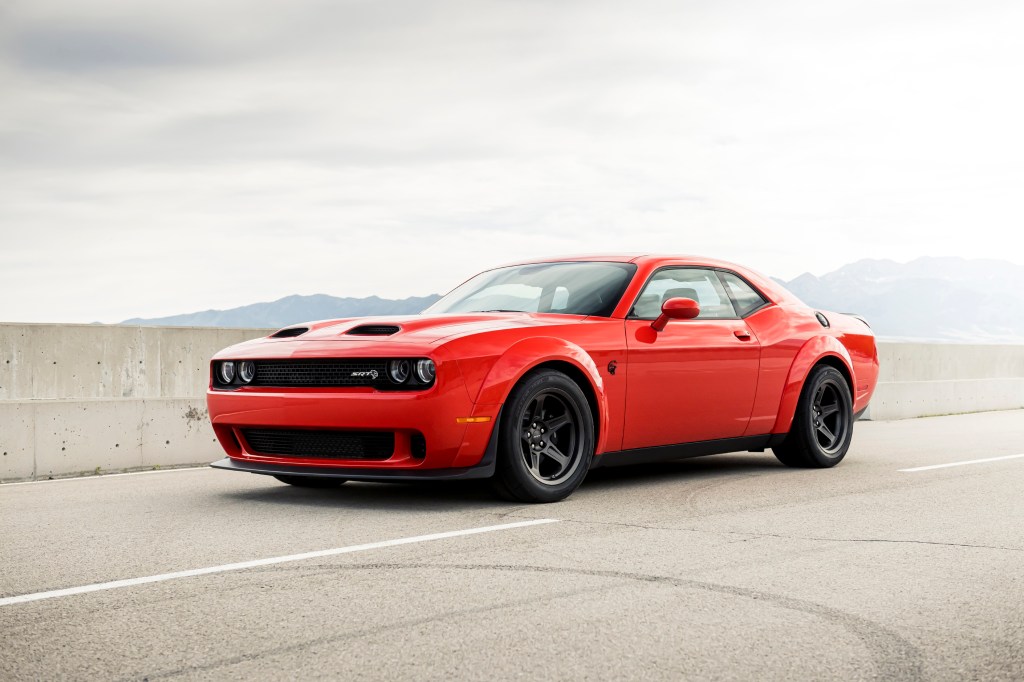
However, that’s all on paper. The reality is that cars have an advantage over motorcycles when it comes to acceleration, Cycle World reports. When a vehicle accelerates, its weight is pushed to the rear. That’s why the Dodge Challenger SRT Super Stock’s suspension stiffens in the back but softens in front in Track Mode. It improves rear weight transfer, which is vital for a RWD car.
This isn’t really an issue for the BMW M5 Competition or the Nissan GT-R. They both have AWD and 4 tires. Plus, even if their weight distribution shifts under acceleration, they both weigh so much, the effects are minimal. But it’s a major safety and performance issue for the Ducati Panigale V4 R. If the rider accelerates too quickly, they could wheelie and fall off the bike.
Luckily, the Ducati Panigale V4 R has wheelie control, along with traction control, stability control, slide control, and engine-brake control. Plus, it has adjustable riding modes, a slipper clutch, aerodynamics-aiding winglets, and a steering damper.
Unfortunately, even with those aides, the Ducati has the slowest 0-60 time. Visordown recorded a time of 3.22 seconds in its testing. Meanwhile, the standard BMW M5 Competition hit 60 in 2.9 seconds in Car and Driver’s testing. That matches the GT-R Nismo’s time, Motor1 reports.
How did the Ducati Panigale V4 R do?
Carwow ran 3 tests: a rolling ¼-mile drag race from 50 mph, a 70-0 braking test, and a standing-start ¼-mile drag race. The rolling race was actually run twice. The second time, each vehicle’s operator chose which gear they wanted to be in to maximize acceleration.
Unfortunately, during the second rolling race, the Nissan GT-R’s transmission broke, and it couldn’t shift into even-numbered gears. As a result, it couldn’t deliver quite the level of performance its 1600 hp promises. But that’s the danger with tuning a car.
However, it did manage to win that first rolling race. And incredibly, the Ducati Panigale V4 R finished ahead of the BMW M5. This was repeated in the second rolling race as well as the standing-start drag race. The only competition the M5 won was the brake test—which makes sense, given motorcycles have less rubber hitting the road.
So, given AWD and 1600 hp, a car can out-speed the Ducati Panigale V4 R. But it can really only do it once.
Follow more updates from MotorBiscuit on our Facebook page.


